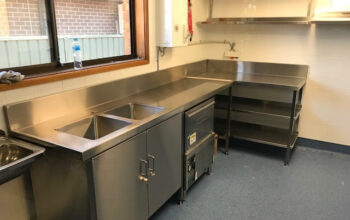Plastic kitchenware, once a staple in homes, is now under scrutiny for its health risks, such as BPA exposure that can affect food safety. In contrast, silicone kitchenware emerges as a safer, healthier alternative. This shift not only prioritizes our well-being but also embraces the durability and versatility silicone offers, marking a significant move towards safer cooking practices.
Health Benefits of Silicone Kitchenware
![]()
The shift towards silicone kitchenware is driven not just by its versatility and durability but significantly by its health benefits. Silicone kitchen tools offer a safer cooking environment by eliminating the exposure to harmful substances commonly found in traditional plastic utensils.
Absence of Harmful Substances
One of the most compelling reasons to choose silicone kitchenware over plastic is its lack of harmful chemicals. Unlike many plastics, silicone does not contain BPA (Bisphenol A), a chemical that has raised health concerns for its potential effects on the brain and prostate gland of fetuses, infants, and children. Furthermore, silicone is free from other toxic substances that can leach into food, especially when heated. This makes silicone utensils, bakeware, and other kitchen items a safer choice for preparing and storing food.
High-Temperature Resistance
Silicone’s ability to withstand high temperatures is another significant health benefit. Where traditional plastics may melt or warp when exposed to high heat, potentially releasing harmful chemicals into food, silicone maintains its integrity up to temperatures as high as 230°C (446°F). This high-temperature resistance reduces the likelihood of chemical leaching, ensuring that the food remains as safe and healthy as possible. Moreover, silicone’s thermal stability means it can go from freezer to microwave or oven without any risk of degrading, offering a versatile solution for meal preparation and storage.
Environmental Advantages of Silicone Utensils
![]()
The shift towards silicone kitchenware is not just a win for health-conscious cooks but also a significant step forward for the environment. Unlike disposable plastics that contribute to landfill growth and marine pollution, silicone utensils offer a reusable, durable alternative that can significantly reduce our ecological footprint.
Reusability and Reduction of Waste
Silicone kitchenware’s reusability is one of its strongest environmental advantages. These items can be used repeatedly for years without showing the wear and tear that often leads to the disposal of plastic items. By choosing silicone, households can decrease their consumption of single-use plastics, contributing to a reduction in overall plastic waste. This not only helps in minimizing landfill mass but also reduces the demand for new plastic production, a process that is energy-intensive and polluting.
Durability and Longevity
The durability of silicone materials further enhances their environmental benefits. Silicone utensils resist heat, cold, and deformation, maintaining their functionality and appearance over time. This extended lifespan means fewer replacements and, consequently, less waste. By investing in silicone kitchenware, consumers are making a choice that benefits the planet, ensuring that the tools they use in their kitchens won’t end up in a landfill anytime soon.
Diversity and Practicality of Silicone Kitchenware
Silicone kitchenware’s appeal extends beyond its health and environmental benefits. Its diversity and practicality have made it an indispensable part of modern kitchens, catering to a wide range of cooking and baking needs.
Variety of Tools Available
The variety of silicone kitchen tools available today is impressive. From baking mats that provide a non-stick surface without the need for greasing, to silicone brushes that withstand high temperatures without losing bristles, there’s a silicone tool for almost every kitchen task. Silicone molds offer creative shapes for cakes and chocolates, while silicone spatulas flex to scrape bowls clean efficiently. This wide range ensures that there’s a silicone option for virtually every cooking and baking requirement.
Meeting Various Cooking Needs
Silicone utensils are designed to meet various cooking environments and needs. They are heat-resistant, allowing them to be used for stirring hot sauces or flipping food in a pan without melting. Their non-stick properties make cleanup a breeze, and their flexibility means they can be used in tight or awkward spaces where rigid tools might not reach. Additionally, silicone kitchenware is safe for use with non-stick cookware, avoiding scratches that metal utensils might cause.
Tips for Choosing and Maintaining Silicone Kitchenware
Selecting and maintaining high-quality silicone kitchenware is essential for maximizing its benefits. Here’s how to ensure you’re making the best choices for your kitchen.
Choosing High-Quality Silicone
![]()
When shopping for silicone kitchenware, look for products manufactured with lsr injection molding technology. This advanced manufacturing process results in items that are more durable, heat-resistant, and free from harmful chemicals. High-quality silicone should feel sturdy yet flexible, and it shouldn’t have any chemical smell. Check the product descriptions or packaging for indications of food-grade silicone, which ensures the item is safe for cooking and baking uses.
Maintaining Silicone Kitchenware
To keep your silicone items in optimal condition, follow these best practices:
- Clean silicone kitchenware promptly after use with warm soapy water to prevent staining and odor absorption. While most silicone is dishwasher safe, hand washing can extend its lifespan.
- Avoid using sharp objects or abrasive cleaners that can damage the silicone surface.
- Store silicone items away from direct sunlight and heat sources to maintain their integrity and color.
By carefully selecting silicone kitchenware made with lsr injection molding technology and adhering to proper maintenance routines, you can enjoy the full range of benefits these tools offer. Not only will your silicone kitchenware last longer, but it will also continue to contribute to a healthier, more environmentally friendly cooking experience.
Conclusion
Silicone kitchenware offers significant health and environmental advantages over traditional plastic utensils. By being non-toxic, durable, and reusable, silicone reduces our exposure to harmful chemicals and decreases plastic waste. Switching to silicone kitchenware is a smart choice for anyone looking to enhance their cooking experience while contributing to a healthier planet. Embrace silicone in your kitchen for a safer, more sustainable approach to cooking and baking.
Related Posts
Hi there! I’m Sethu, your go-to guy for all things tech, travel, internet, movies, and business tips. I love sharing insights and stories that make life more interesting. Let’s explore the world together, one article at a time!










